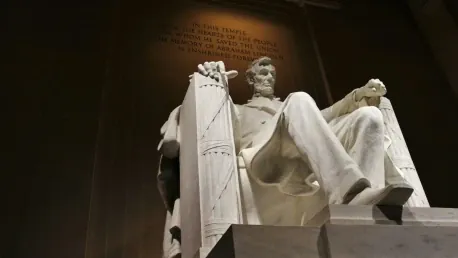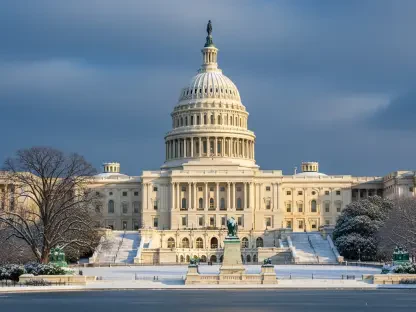The regulatory landscape in the United States has witnessed significant transformations under different presidential administrations. From Nixon to Biden, each era has brought forward different priorities and philosophies regarding regulation. This article explores these evolving regulatory frameworks, delving into the socio-economic impacts each administration’s policies have had on American life.
Regulatory Foundations: The Nixon Era
Establishing Key Regulatory Agencies
Richard Nixon’s administration marked a turning point in how the federal government approached regulation. By creating pivotal agencies like the Environmental Protection Agency (EPA), Nixon established mechanisms to address environmental issues comprehensively. The EPA became a cornerstone for federal environmental policy, leading efforts to reduce air and water pollution, manage hazardous waste, and enforce environmental standards. This era laid the groundwork for a more environmentally conscious federal oversight.
Nixon’s tenure also saw the birth of the National Highway Traffic Safety Administration (NHTSA), addressing vehicle safety standards and occupant protection. These regulations sought to curb the rising fatalities associated with automobile accidents. The establishment of the Consumer Product Safety Commission (CPSC) aimed to ensure that products sold in the United States met safety standards to protect consumers from unreasonable risks of injury or death.
Occupational Safety and Health Administration (OSHA)
In a bid to address workplace safety, Nixon instituted the Occupational Safety and Health Administration (OSHA). Charged with ensuring safe and healthy working conditions by setting and enforcing standards, OSHA also provided training and outreach to employers and workers. By focusing on prevention, OSHA sought to reduce workplace injuries and fatalities, fostering a culture of safety and compliance. Through a combination of regulation and education, OSHA tackled hazards in high-risk industries, contributing to significant improvements in worker safety over the decades.
The Ford and Carter Administrations
Revitalizing the Federal Trade Commission (FTC)
Gerald Ford and Jimmy Carter focused on revitalizing the Federal Trade Commission (FTC), aiming to protect consumers and promote competition. This period saw a push toward eliminating unfair business practices that exploited consumers and stifled competition. Ford and Carter’s efforts to strengthen the FTC’s authority and resources allowed for more aggressive enforcement against deceptive advertising, antitrust violations, and other consumer protection issues, ensuring a fair marketplace.
Moves Towards Deregulation
The Ford and Carter eras marked the beginning of significant deregulation, notably in the transportation and natural gas sectors. These administrations reduced government intervention in markets, aiming to promote competition and increase efficiency. Examples include the Airline Deregulation Act under Carter, which lifted government control over fares, routes, and market entry of new airlines, leading to lower fares and greater consumer choice. Similarly, natural gas deregulation aimed to enhance supply and lower prices, fostering a more dynamic energy sector.
Reagan, Bush, and Clinton: Continued Deregulation and Adjustments
Reagan’s Deregulatory Push
Ronald Reagan further advanced deregulation, emphasizing reduced government intervention in the economy. His administration cut regulations across various industries such as telecommunications, banking, and energy, guided by the philosophy that less government interference would unleash market forces, spur competition, and drive innovation. The Reagan era witnessed a significant rollback of regulatory frameworks that were perceived to hinder business growth and economic efficiency. This deregulatory momentum was instrumental in shaping a more market-driven economy.
Bush’s Policy Adjustments
George H. W. Bush, while maintaining some of Reagan’s deregulatory policies, made adjustments to address emerging economic and social issues. His administration faced pressures to balance deregulation with responsible governance, particularly in response to growing environmental and public health concerns. The Clean Air Act Amendments of 1990, for example, reflected Bush’s pragmatic approach, introducing comprehensive regulatory measures to combat air pollution while attempting to minimize economic disruption.
Clinton’s Balanced Approach
Bill Clinton adopted a balanced approach, combining deregulation with necessary regulatory measures. His administration’s policies aimed at enhancing market efficiency while ensuring consumer protection and environmental sustainability. The Telecommunications Act of 1996, for instance, deregulated the broadcasting and telecommunications markets, fostering competition. Concurrently, Clinton focused on environmental and labor regulations, striving to balance economic growth with social responsibility. This period underscored the need for a nuanced regulatory approach that accommodates both market dynamics and critical protections.
Bush and ObamDivergent Regulatory Philosophies
George W. Bush’s Pro-Business Stance
George W. Bush’s administration emphasized a pro-business stance, aiming to curtail regulations perceived as burdensome to economic growth. Efforts were made to streamline regulatory processes across various sectors, reducing compliance costs for businesses and encouraging investment. This de-emphasis on regulation was evident in policies that relaxed oversight in areas such as finance and environmental protection, aimed at fostering a business-friendly environment conducive to growth and innovation.
Obama’s Regulatory Expansion
In contrast, Barack Obama expanded the regulatory framework, especially in response to financial crises and healthcare needs. Significant legislation like the Dodd-Frank Wall Street Reform and Consumer Protection Act sought to enhance oversight of the financial industry to prevent a repeat of the 2008 financial crisis. The Affordable Care Act, another landmark legislation of the Obama era, aimed at expanding healthcare access and ensuring consumer protection in the health insurance market. These regulatory expansions were rooted in addressing systemic vulnerabilities and ensuring public welfare.
Trump and Biden: Recent Trends in Regulation
Trump’s Deregulatory Agenda
Donald Trump’s administration pursued aggressive deregulation, aiming to roll back many Obama-era policies. Emphasis was placed on reducing regulations that were considered harmful to business interests. This agenda included significant cuts to environmental regulations, financial industry rollbacks, and a streamlined process for regulatory approvals. The intent was to foster a deregulated environment that could boost business growth, drive economic expansion, and reduce governmental overreach.
Biden’s Regulatory Revisions
Joe Biden’s administration has sought to revise and enhance regulatory measures, focusing on climate change, public health, and worker rights. Biden aims to balance economic growth with sustainable and equitable policies, reintroducing and updating regulations in areas like environmental protection, labor rights, and public health. His administration’s commitment to re-engage with international climate agreements and enhance regulatory oversight signals a comprehensive approach toward ensuring long-term sustainable development and social equity.
Impact on Social Welfare and Economic Efficiency
Evaluating Social Welfare
Regulatory policies have had varying impacts on social welfare. Deregulatory actions in sectors like telecommunications and transportation improved market efficiency by fostering competition and lowering consumer prices. However, the transition often necessitated welfare measures for displaced workers and communities affected by these changes. While some benefited from lower costs and increased choices, others faced hardships due to job displacements and reduced incomes, highlighting the need for balanced welfare policies alongside deregulatory measures.
Economic Efficiency Considerations
Evaluating economic efficiency reveals mixed outcomes. While deregulation often spurred innovation, competition, and market dynamism, certain regulatory failures led to substantial compliance costs without equivalent benefits. Policies that excessively cut back essential protections sometimes resulted in market instability and public harm. Thus, while deregulation promoted certain aspects of economic efficiency, it necessitated vigilant oversight to ensure that short-term gains did not overshadow long-term public welfare and economic stability.
Persistent Regulatory Challenges
Government Failure in Regulation
Government failures are evident in areas where regulatory policies led to wastage of resources. Inefficient policy designs and high compliance costs often hindered the intended social and economic benefits. For instance, regulations that were overly complex or poorly implemented resulted in administrative burdens without significantly advancing public welfare. These failures highlighted the importance of evidence-based policy-making and continuous regulatory evaluation to avoid unintended consequences and resource misallocation.
Addressing Market Failures
Government intervention remains necessary to address market failures such as natural monopolies, externalities, and public goods provision. Balancing regulatory actions with market forces continues to be a complex endeavor, requiring nuanced approaches to ensure that regulations effectively correct market inefficiencies without stifling innovation. Successful regulations are those that are adaptable, evidence-based, and designed to address specific market failures while minimizing economic distortions and fostering healthy competitive environments.
Successes and Failures in Regulatory Policies
Beneficial Deregulatory Actions
Deregulation has yielded substantial benefits in many industries, improving competition, innovation, and consumer choice. The transportation, telecommunications, and energy sectors exemplify these successes, showcasing how reducing regulatory burdens can lead to significant market improvements. These sectors experienced enhanced service quality, reduced prices, and technological advancements that were made possible by fostering a more competitive landscape. Deregulation in these industries highlights the potential of market-driven approaches to create substantial public and economic benefits.
Negative Impacts of Persistent Regulations
Conversely, certain regulatory policies have remained unchanged for decades, perpetuating inefficiencies and preventing optimal economic and social outcomes. These persistent regulations often contribute to welfare losses, necessitating targeted reforms to eliminate outdated and counterproductive rules. Addressing these regulatory remnants is crucial for enhancing the efficiency and effectiveness of the regulatory landscape. Reforming these persistent regulations can unlock new opportunities for growth, innovation, and improved welfare across various sectors.
Policy Recommendations and Future Directions
Need for Empirically Driven Reforms
Empirically driven policy reforms are essential for eliminating inefficiencies and enhancing social welfare. Future administrations must prioritize data-driven approaches to regulation to ensure that policies are grounded in evidence and aligned with economic realities. Such approaches involve continuous monitoring, assessment, and adaptation of regulations to address changing conditions and emerging challenges. Empirical data and rigorous analysis provide a foundation for designing regulations that optimize benefits while minimizing unintended costs.
Balancing Deregulation and Regulation
The regulatory environment in the United States has undergone substantial changes under various presidential administrations, from Nixon to Biden. Each administration has introduced different regulatory priorities and philosophies that reflect the socio-political climate and the challenges of their respective times. Nixon’s era, for instance, saw the establishment of the Environmental Protection Agency (EPA) as responses to growing environmental concerns. Reagan’s administration, on the other hand, was characterized by a strong push for deregulation to stimulate economic growth. Clinton’s approach was more balanced, aiming to maintain necessary regulations while also encouraging economic advancement.
The Obama administration brought a wave of financial reforms in the aftermath of the 2008 financial crisis, notably through the Dodd-Frank Act aiming to avoid another economic meltdown. The Trump era marked another shift back towards deregulation with the goal of reducing federal oversight and promoting business. Currently, the Biden administration emphasizes more stringent regulations particularly in the areas of environmental protection and corporate accountability.
These evolving frameworks have profound impacts on American life, influencing everything from economic conditions to public health and environmental sustainability. This article delves into these regulatory changes, analyzing how each administration’s policies have shaped the socio-economic landscape of the United States.









